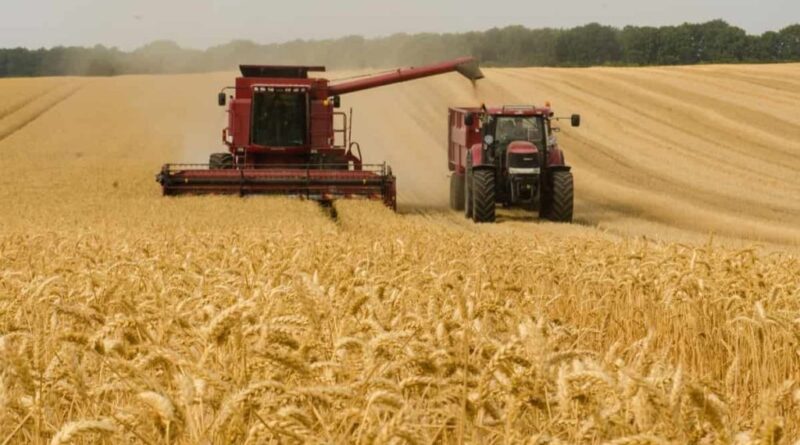US wheat farms declined 40% in the last 20 years
By Ryan Hanrahan
The United States Department of Agriculture’s Economic Research Service reported earlier this week that “the number of wheat farms in the United States has declined substantially over time. Since 2002, the total number of wheat farms fell by more than 40 percent, from 169,528 in 2002 to 97,014 in 2022, and also more than 7 percent lower from 104,792 farms in 2017.”
In addition to the decline in wheat farms, “wheat production is down slightly, but has been variable year to year,” the USDA ERS reported. “Annual wheat production ranged from about 1.6 billion bushels in marketing year 2002/03 to as much as 2.5 billion bushels in 2008/09. Notably wheat production has not topped 2.0 billion bushels from 2017/18 to 2023/24.”
The USDA ERS reported that “much of the decline in U.S. wheat production has been the result of lower area harvested, which dropped from 56 million acres in marketing year 2008/09 to a low of 35.5 million acres in 2022/23. Area harvested has remained below 40 million acres from marketing year 2017/18 through 2023/24.”
Another “major reason for the decline in wheat production and area over time is that wheat has become a rotational crop that is mixed into rotations with more profitable corn or soybean crops,” the ERS said.
According to USDA ERS commodity cost and returns estimates, “production less operating cost, which is a measure of profitability,” has grown a little more than $83 to $185.26 per acre for wheat from 2017 to 2022. For corn, that same measure has more than doubled to $654.46 per acre, while for soybeans it has grown to $441.53 per acre in 2022.
“Additional factors include changing farming practices, the development of seed varieties for corn and soybeans that are more conducive to growing conditions in areas traditionally planted to wheat, and other technological developments,” the ERS reported.
The ERS reported that “the reduction in the number of farms reporting wheat harvested area occurred across all classes. The number of farms producing Durum wheat saw the largest percentage reduction, down nearly 60 percent from the 2002 Census and 30 percent from the 2017 Census. The next largest reduction was in other spring wheat farms with a 43-percent reduction from 2002 and a 14-percent reduction from the 2017 Census of Agriculture.”
As of 2022, Kansas now accounts for 15% of all wheat farms in the United States, followed by North Dakota and Ohio. Only a handful of states had increases in the total number of wheat farms from 2017 to 2022, including Pennsylvania, Wisconsin, Georgia, Mississippi and Kentucky, the ERS said.
The ERS also reported that “the number of smaller farms is shrinking at a faster rate than larger farms. Between 2017 and 2022, all but the largest wheat farms (specifically, those from 1 to 2,999 acres) saw reductions anywhere from 4 percent for farms between 100 and 249 acres to 11 percent lower for farms in the 250-to-499 acres category.”
“Overall, the 2022 Census of Agriculture shows a continuation of a much longer-term trend,” the ERS wrote. “The number of wheat farms continues to shrink across all but the largest farm sizes. The average farm size continues to grow as the number of smaller farms declines and larger farms increase in number.”
This article has been republished from The Farmer’s Advance.

